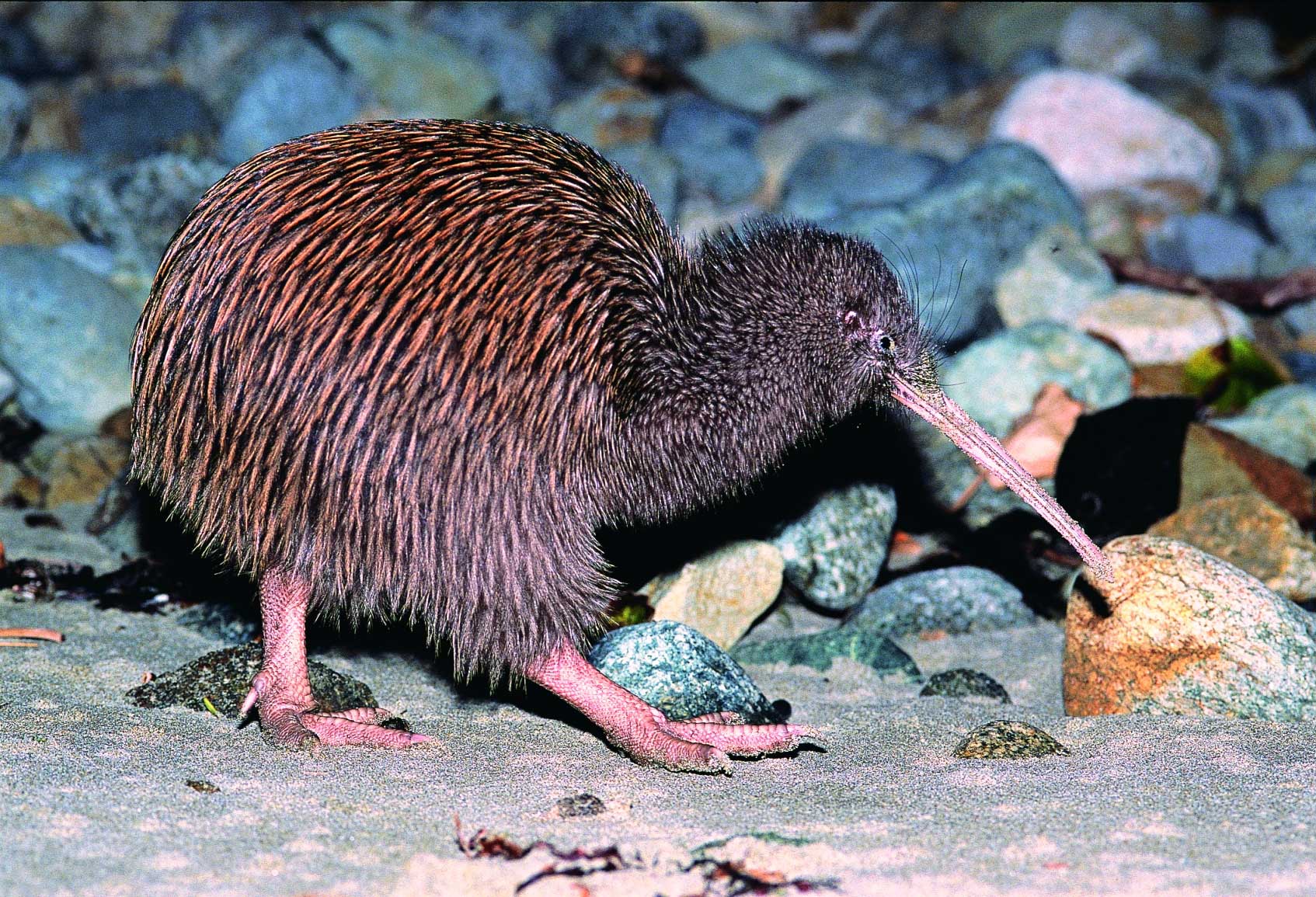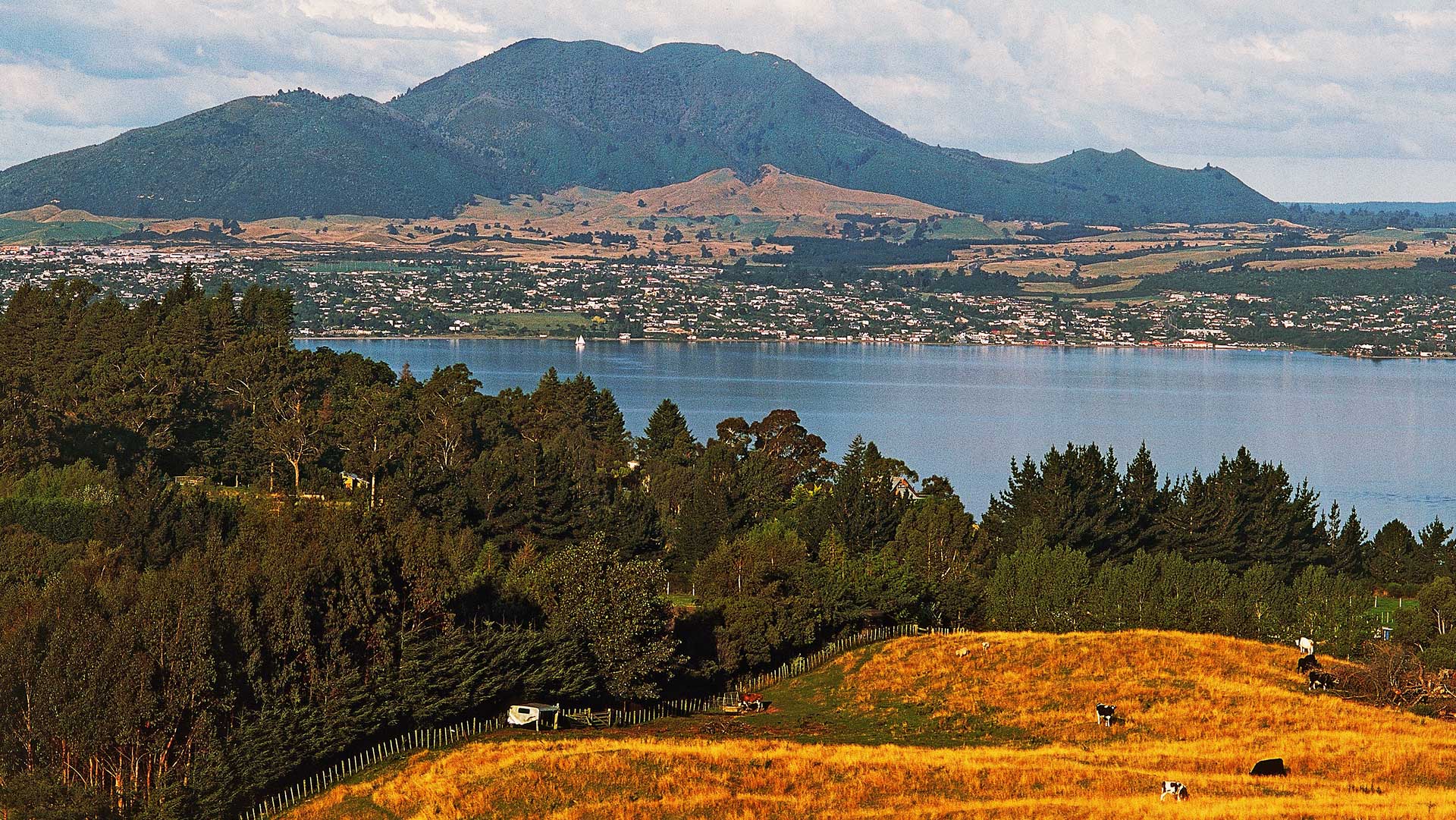I don’t know which was more exciting – watching a real wild kiwi feeding on a beach from just metres away or standing on possibly the very spot where Sir David Attenborough had been, doing exactly the same thing. Either way, it was a thrill for both of us: he’s on record as claiming it as his best-ever experience in New Zealand.
It was right up there for me too. It was also such a surprise. A kiwi, on a beach! Who knew? But by the end of our Kiwi Encounter, the ten of us on
this nocturnal expedition were returned to Oban on Stewart Island if not Attenborough-level experts, then very much more knowledgeable than when we had set out.
Stewart Island has the unique, and enviable, distinction of having a very much larger population of kiwi (13,000) than Kiwis (381).
Even better, their Southern brown kiwi is diurnal, meaning it’s not at all unusual to see it during the day in quiet spots around the town.
For a money-back guarantee of a sighting, though, head out after dinner with Real Journeys on its comfortable catamaran for a 40-minute cruise across Paterson Inlet to Little Glory Cove.

Birds were everywhere. Leaving Oban’s tame and rowdy kaka population behind, on the way there were mutton birds, albatrosses and even a yellow-eyed penguin.
However, our focus was the kiwi we’d just been told all about – the parents each take turns sitting on that giant egg, the kids hang around their parents for years, mum’s bigger than dad, they mate for life – and we hustled eagerly ashore.

Obediently shining our torches at our feet only, our camera flashes turned off, we filed up the hill and into the bush, ears pricked for that distinctive call, while guide Greg peered into the dark.
He stopped and then we heard it: first a hoarse, deep cry from the female and then a higher-pitched squeak from the male.

Excited to know they were so close, we emerged onto Ocean Beach and right away saw more proof: footprints in the sand.
Suddenly, there she was, a big female close by, busily feeding along the high tide line, prodding her long beak into the trails of washed-up kelp. She was harvesting the sand-hoppers underneath, vigorously poking through the seaweed right down into the sand, all the way up to her face.

Against the chorus of quietly clicking camera shutters, we could hear her periodically sneezing, to blow the sand out of her nostrils. This was the sound that had Sir David gasping with delight. Naturally, we were also excited to see such a rare sight, one that felt timeless.
Further along the beach, we spotted another kiwi, smaller this time: a male. He, too, was absorbed in his feeding and paid us no attention as we stood just five metres away while Greg shone his torch to the side, giving our adjusted night-sight enough light to see him well.

After finding another female, we came away completely satisfied, all of us happy to have seen our precious national icon, wild and natural.
The return trip to Oban was cheerful and noisy, everyone buzzing, sharing photos and astonished to discover when we tied up that it was 1.30am. What a night!

An insider’s guide to… Stewart Island
Go with: Real Journeys Wild Kiwi Encounter ($140 per person), stewartislandexperience.co.nz.
Best time to go: The tour runs every evening September to May. Departures are timed to get to the beach for dark.
What to wear: It’s Southland – be prepared for cold and wet, whatever the season. Ideally, wear a non-rustly jacket and sturdy footwear.
Who can go: Anyone over-15, who can cope with a track that can be steep, uneven and muddy. You’ll need to be able to walk for two hours.
Don’t forget: Your camera, but make sure you know how to turn off the flash and what setting is best for low light.
.jpg)

